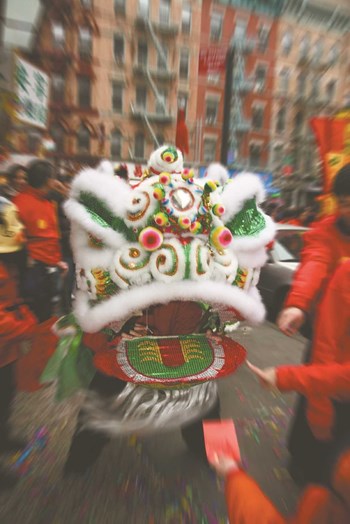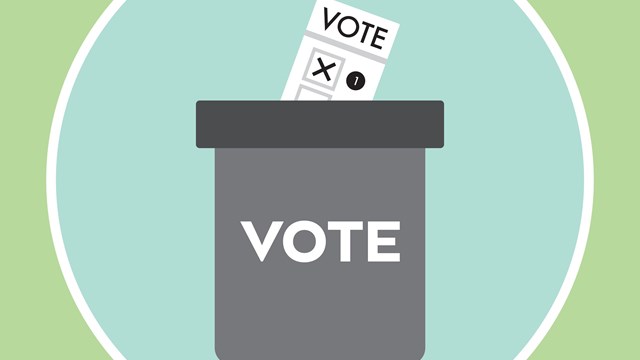
"Forget it, Jake. It’s Chinatown.” An immortal line from a beloved movie, and perhaps a reflection of how many Western urbanites over the years have viewed the large pockets of Asian immigrants that have settled in their cities. Chinatowns dot the country from coast to coast, but their residents have often been treated with suspicion, discrimination, and outright hostility.
Despite many obstacles both social and governmental, New York City’s Chinatown has flourished since the late 1800s, and as it has grown and cultural attitudes have shifted and evolved, it has caught the eye of developers, newcomers to the city, and all manner of others, not necessarily of Asian ancestry. The Chinatown of today still features the bright signs illuminating bustling markets and apothecaries, and the staccatto sounds of Mandarin and Cantonese being spoken on every street, but today it’s also home to new residential developments, and new residents themselves.
Hard Work, Little Reward
The first Chinese immigrants to arrive in New York City were primarily men from China’s Guangdong Province who moved east, after disembarking in California and toiling to build the Central Pacific Railroad system. These men left their wives and children back in China, with intentions to either send for them, once they established themselves in the west, or to return to China with their earnings.
For a number of unpleasant reasons it didn’t work out quite that way for most of them. Railroad workers were paid a pittance for backbreaking labor, and the Chinese workers in particular were willing to work for almost nothing. This instilled resentment in American and European laborers, who felt they were undersold by this new wave of cheap manpower. Consequently, blatant discrimination and physical violence against Chinese newcomers was not uncommon, and eventually, a new set of stringent labor and immigration laws were passed limiting the number of Chinese immigrants allowed into the country and dictated where they could and could not live once they got here.
Among these, the Chinese Exclusion Act—passed in 1882 and not repealed until 1943—prohibited newly arrived Chinese men from bringing their families into the country. This legislation slowed the wave of immigrants to a steady trickle comprised almost entirely of men, turning New York’s Chinatown into a curious neighborhood of bachelors. This—combined with the expatriated community’s retention of traditional cultural formalities and patterns— made New York’s Chinatown a mark for suspicion and misconception, as well as a novel destination for curious Victorians, traipsing through the neighborhood hoping to catch a glimpse of an opium den or gawk at the locals.
White New Yorkers’ view of Chinatown and its inhabitants didn’t end at mere curiosity. The Chinese were viewed as heathens, treated as less-than second-class citizens, and forced to stay within the confines of their neighborhood. Prejudice, combined with tight borders, created problems in and of itself. According to Donna Lentol, a broker with Douglas Elliman’s downtown office, “Because of the waves of immigration into the Lower East Side, people kind of broke off into different groups, and that’s how the various neighborhoods got formed.”
No Room, No Rest
The compound effect of immigration policies, the circulation of racial ideologies and a middle class exodus to suburbia created a vacuum effect in Chinatown, and by 1960, the neighborhood became an insular community, of no more than 5,000 residents, concentrated with elderly bachelors and functioning almost autonomously. The overwhelming majority worked within a block or two of where they lived, in one of Chinatown’s handful of industries; textile production was an economic mainstay of the neighborhood, along with hand laundries and restaurants. Living conditions in many of the buildings were far from what would be considered healthy or pleasant.
Nearly everything in Chinatown at the turn of the last century—from the industries to the tenement buildings to the legal system—was controlled and regulated by affiliations of businessmen and community leaders called tongs. The tongs of Chinatown handled legal disputes, social services, and neighborhood protection, among many other things. From time-to- time, disputes arose between tongs, and violence occasionally erupted on the streets. The Tong Wars, as they were called by outsiders at the time, stymied New York’s police forces and made what was already an obscure area even more peripheral. Throughout WWI, the Great Depression, and the Prohibition era, the Exclusion Act tightened its grip, and Chinatown became even more of an island unto itself.
After the Wars
As the country staggered under the weight of war and economic collapse, the denizens of New York’s Chinatown— well acquainted with privation and hardship—largely went about their business. The tongs—now under the scrutiny of the newly vigilant NYPD continued to orchestrate the goings-on in the neighborhood. Little changed in the day-to-day lives of New York’s Chinese until the United States’ entrance into World War II—with mainland China as an ally—at which point the Chinese Exclusion Act was finally stricken from the books.
Two decades after that, in 1965, the Immigration and Naturalization Act raised the quota of Chinese able to enter the country from its prewar low of 105 people per year to 15,000.
Once the ban on emigrants was lifted, thousands of families flooded into Chinatown, reuniting with lost relatives, and by 1970 Chinatown began to shift it’s long-held borders into Little Italy, parts of Soho, and the Lower East Side. Says Lentol, “Since WWII, [Chinatown] has gotten more crowded—more densely populated. ”
The rapid influx of newcomers strained the network of support that had been built up in Chinatown and resulted in a large proportional increase in poverty and miserable working conditions. New arrivals outstripped the ability of the tongs to regulate trade and settle disputes, and as more and more young Chinese arrived in the city, the old-timers’ hold on their neighborhood began to erode. The waning of tradition, combined with hard economic times and the passing of generations of elders, contributed to a rise in crime, and the tongs—which, occasional internal battles notwithstanding, had until then been more or less benevolent—became less concerned with cultural preservation and community oversight and more like street gangs. Drugs, guns, and protection rackets soon became all too common motifs in the fabric of life in Chinatown.
By the 1980’s, Chinatown was a maze of crowded, crumbling 19th century tenement buildings, run-down noodle shops, and floundering businesses. New construction in the area was at a standstill, and the divided and sub-divided residential buildings were under the control of independent landlords—many of whom only rented space to incoming workers and accepted only cash for rent, without offering tenants the benefits or security of an official lease.
(Re)Enter the Dragon
Things changed, however, as the economic doldrums of the 1970’s and early 80’s gave way to the halcyon days of the 1990’s. Suddenly, Downtown was a gritty-but-glamorous place to live, and hip young professionals who’d either overflowed or been priced out of neighboring NoLita, Tribeca, and SoHo turned an eye to the hive of activity below Canal Street. Chinatown’s Blade Runner ambiance and charm reinforced its appeal, and soon the media was reporting on friction and acrimony between lifelong Asian residents and newcomers. Rental landlords, tempted by the prospect of charging sky-high market rents for walk-up tenement apartments, began to oust rent-controlled tenants— many who occupied their homes for over two generations. Today the neighborhood is home to an approximation of 150,000 people, a number that remains questionable, as historically Chinatown’s population has gone under-counted. Dr. Peter Kwong, a professor of Asian American Studies, urban affairs and planning and sociology has written several books about Chinatown and confirms that population under-counting is a perpetual problem. “The 2000 census shows Chinatown’s population at 54,650, although the actual figure my have been twice that,” reports Kwong in a New York Times, three-part, question and answer series titled Answers About the Gentrification of Chinatown.
Shortly after the last census Chinatown’s sizable population experienced decreases in the requisite services and grants residents state they desperately needs. The city’s resource contribution to the Chinatown Partnership Local Development Corporation—an organization which has assumed the task of street cleaning, trash pick-up and systematic graffiti removal—is due to expire in mid 2010. “It’s a common misconception,” says Wellington Chen, executive director of the Chinatown Partnership, “all the city is responsible for is removing the trash from your corner garbage can, and the inspection of buildings three times a day to distributing fines when appropriate.”
The partnership was formed after 9/11 to address the communities’ sanitation deficiencies; however, according to Chen the problems extends beyond trash removal— it concerns quality of life and prevailing assumptions which consider uncleanliness a normal characteristic of marginalized neighborhoods. “No one argues with the janitor when they clean their office or hallways three times a day, but also no one volunteers to do it themselves,” he says. “ When you talk about funding and volunteers, how do you sustain something like that? It about enlightenment and taking a stand.”
Affordable Housing and Rezoning
Much to the dismay of longtime residents and small business owners, Chinatown has changed dramatically with the construction of new condominium developments, boutique hotels, trendy restaurants and luxury shopping establishments post-9/11. Many of the residents and community activists believe that the city’s new land-use policies benefit luxury and large-scale development and extirpate the neighborhood’s urban charm and cultural character. However, what is most alarming is the accelerated pace in which unregulated private development has taken place at the detriment of tenants and shop owners. The Community Development Project of the Urban Justice Center and the Committee Against Anti-Asian Violence report an increase in housing violations, where a surveyed total of 75 percent of Chinatown’s residents “lived with one or more serious housing violations in the past year.” Other tenants surveyed in the study reported harassment from landlords, forced evictions and displacement.
Concerns over large-scale development in similar communities have garnered attention from the City Planning Commission (CPC) and the Department of Housing Preservation and Development (HPD).
“When exploring the possibility of a rezoning we work closely with communities to identify areas where zoning is outdated and neighborhood character is in jeopardy of being irreversibly changed,” says a representative of the New York City Department of City Planning. After extensive review the Department of City Planning approved the Lower East Side rezoning plan, which came into effect on November 19, 2008, but excludes Chinatown.
The plan re-zones over “110 blocks in the East Village in Manhattan Community District 3,” to include a moratorium on tower-scale developments, support modest growth and the development of affordable housing to sustain the tenant-based population and preserve the historically integrity of the neighborhood.
“In the East Village and Lower East Side we heard numerous concerns about new buildings that had been constructed at heights significantly above the low- and mid-rise scale so strongly associated with these neighborhoods, they say.”
However, many Chinatown residents and community advocacy groups are not satisfied with implications of Lower East Side/ East Village rezoning on Chinatown’s future. Groups such as the Chinese Staff and Workers Association, Chinese Restaurant Alliance and the National Mobilization Against Sweatshops charge that the rezoning measures are racist and believe the plan will only drive luxury high-rise development into Chinatown.
A court action was requested, by the above mentioned parties, to void the CPC’s Environment Impact Statement and order a revised statement addressing the “disproportionate racial impact on low-income communities of color.”
Chinatown in the 21st Century
Throughout its history, New York City’s Chinatown has stood alongside, yet apart from, the rest of the metropolis, closely guarding its traditions and culture and serving as an entry point for millions of people in search of a piece of the American dream. As time has gone on, other concentrations of Chinese immigrants have sprung up in Queens and Brooklyn, but the oldest Chinatown in Lower Manhattan remains the iconic original. Says Lentol, “I think it’s a culture that’s ingrained in Lower Manhattan, and that’s a good thing. Everybody has their piece of Manhattan, and that’s the way it’s been throughout the city’s history. People immigrate in and take over certain parts, and then in a few years, it changes. I think now, people have businesses in Chinatown for the sake of the business; they come to New York to start a business in Chinatown, or they come to make their money so they can then purchase an income-producing property in Chinatown.”
Time will tell whether or not the neighborhood can hold onto its unique identity in an era of towering expenses, changing politics, and uncertain economics—but for now, Chinatown’s history speaks for itself: over a century of largely self-sustained growth and stability against formidable odds in a sometimes-hostile city.
Hannah Fons is associate editor of The Cooperator.






Leave a Comment